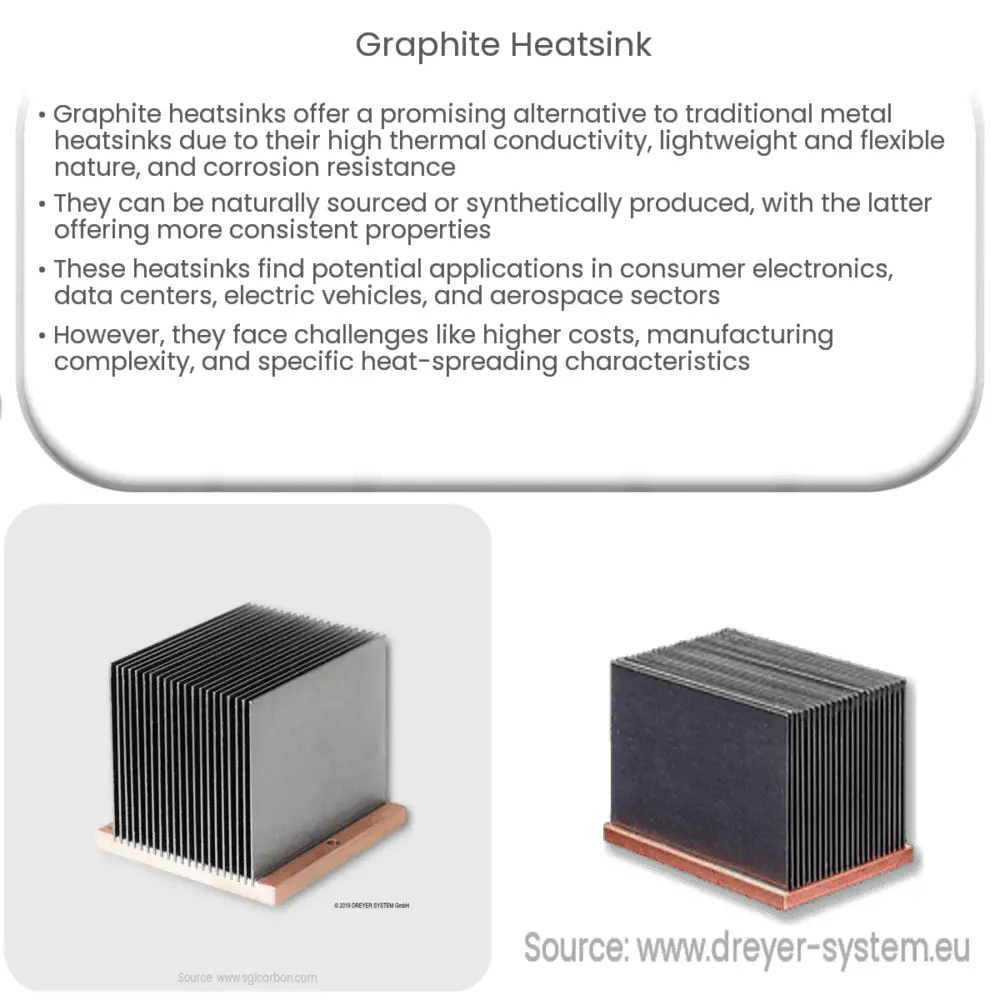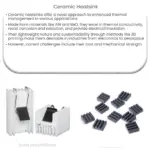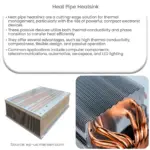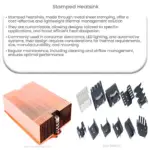Graphite heatsinks offer efficient thermal management with high conductivity, lightweight design, flexibility, and corrosion resistance.

Graphite Heatsinks: An Innovative Solution to Thermal Management
Introduction
As electronic devices continue to become more powerful and compact, efficient thermal management has become a critical aspect of their design. Heatsinks are one of the most common ways to dissipate heat from electronic components, and they are used in a wide range of applications, from personal computers to large data centers. While traditional metal heatsinks have long been the norm, recent developments in materials science have led to the emergence of a new contender: graphite heatsinks. In this article, we will explore the benefits and potential applications of this innovative technology.
Why Graphite Heatsinks?
Graphite heatsinks offer several advantages over traditional metal heatsinks. These include:
1. High Thermal Conductivity
One of the most critical properties of a heatsink is its thermal conductivity, which determines how efficiently it can transfer heat from a device. Graphite has an inherently high thermal conductivity, with some forms of graphite exhibiting thermal conductivity values even higher than those of metals such as copper and aluminum. This makes graphite heatsinks highly effective at dissipating heat and keeping electronic components cool.
2. Lightweight and Flexible
Graphite is significantly lighter than metals like aluminum and copper, making it an attractive choice for applications where weight is a concern. Additionally, graphite can be manufactured into flexible sheets, allowing for heatsinks that can be easily molded and integrated into a variety of device shapes and sizes. This flexibility is particularly valuable in the design of compact, portable electronic devices such as smartphones and laptops.
3. Corrosion Resistance
Unlike metals, graphite is highly resistant to corrosion and does not oxidize, ensuring that its performance remains consistent over time. This property makes graphite heatsinks ideal for applications in harsh environments or where long-term reliability is crucial.
Types of Graphite Heatsinks
There are two primary types of graphite heatsinks currently available:
1. Natural Graphite Heatsinks
Natural graphite heatsinks are made from graphite extracted from the earth, typically in the form of flake or lump graphite. These heatsinks exhibit high thermal conductivity, but their properties can vary depending on the source and purity of the graphite. The manufacturing process for natural graphite heatsinks typically involves compressing the graphite into sheets and then cutting or machining them into the desired shape.
2. Synthetic Graphite Heatsinks
Synthetic graphite heatsinks are manufactured from a carbon precursor material, such as petroleum coke or pitch. The precursor is subjected to a series of high-temperature processes to create a highly ordered and thermally conductive graphite structure. Synthetic graphite heatsinks typically have more consistent properties than their natural counterparts and can be engineered to have specific thermal conductivity values and mechanical properties, making them well-suited for a wide range of applications.
In the next section, we will discuss the potential applications of graphite heatsinks, as well as their limitations and challenges.
Potential Applications of Graphite Heatsinks
Graphite heatsinks have a wide range of potential applications, spanning various industries and devices. Some of these include:
1. Consumer Electronics
With their high thermal conductivity, lightweight nature, and flexibility, graphite heatsinks are an ideal solution for portable devices such as smartphones, tablets, and laptops. By incorporating graphite heatsinks, manufacturers can create thinner and lighter devices without compromising on performance or thermal management.
2. Data Centers and Servers
Efficient thermal management is crucial for the reliable operation of data centers and servers. Graphite heatsinks can help improve the cooling efficiency of these systems while reducing weight and space requirements, leading to more compact and energy-efficient data center designs.
3. Electric Vehicles and Battery Systems
Graphite heatsinks can be used to enhance the thermal management of electric vehicle components, such as power electronics and battery systems. Effective cooling can improve the performance, efficiency, and longevity of these components, which is crucial for the widespread adoption of electric vehicles.
4. Aerospace and Defense
Due to their lightweight, corrosion-resistant nature, and high thermal conductivity, graphite heatsinks are well-suited for aerospace and defense applications. They can be employed in aircraft, satellites, and other systems where weight and reliability are critical factors.
Limitations and Challenges
Despite their numerous advantages, graphite heatsinks also come with some limitations and challenges that need to be considered:
1. Cost
Graphite heatsinks, particularly synthetic graphite heatsinks, can be more expensive than traditional metal heatsinks. However, this cost may be offset by the potential for improved performance, reduced weight, and increased device longevity in certain applications.
2. Manufacturing Complexity
While graphite heatsinks can be manufactured in various shapes and sizes, the production process can be more complex and challenging than that of traditional metal heatsinks. This may result in longer production times and higher costs for specialized designs.
3. Heat Spreading
Graphite heatsinks have excellent in-plane thermal conductivity but relatively lower through-plane conductivity compared to metals. This means that they are highly effective at spreading heat across a surface but may be less efficient at dissipating heat through their thickness. Designers must take this into consideration when creating cooling solutions using graphite heatsinks.
Conclusion
Graphite heatsinks offer numerous benefits over traditional metal heatsinks, including high thermal conductivity, lightweight and flexible designs, and corrosion resistance. These advantages make them well-suited for a wide range of applications, from consumer electronics to aerospace and defense. Despite some limitations and challenges, graphite heatsinks are poised to play an increasingly important role in the future of thermal management and the continued miniaturization of electronic devices.




